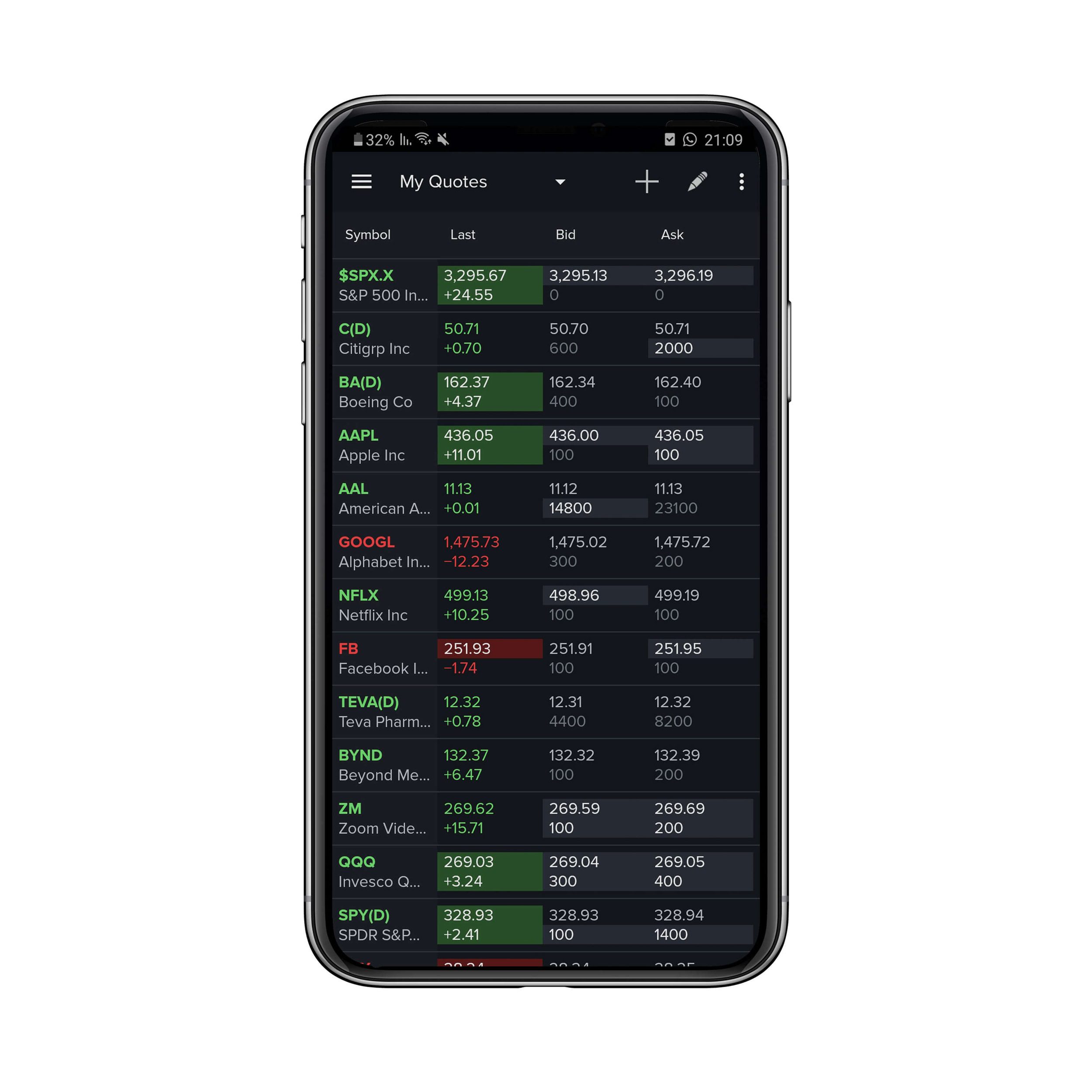

Finance
What Does Resistance Mean In Stocks
Published: January 17, 2024
Learn what resistance means in stocks and how it impacts your investments. Get insights and tips for managing resistance in the world of finance.
(Many of the links in this article redirect to a specific reviewed product. Your purchase of these products through affiliate links helps to generate commission for LiveWell, at no extra cost. Learn more)
Table of Contents
- Introduction
- Definition of Resistance in Stocks
- Understanding Price Resistance Levels
- Identifying Resistance in Stock Charts
- Factors Influencing Resistance Levels
- Importance of Resistance in Stock Trading
- Strategies for Dealing with Resistance in Stocks
- Examples of Resistance Levels in Stock Markets
- Conclusion
Introduction
When it comes to trading stocks, understanding market dynamics is crucial. One important concept that traders need to be familiar with is resistance. In the world of finance, resistance refers to a significant price level at which a stock struggles to rise beyond. It acts as a roadblock, preventing the stock from reaching higher price levels. Understanding resistance can provide valuable insights into potential market trends and make or break a trader’s success.
Resistance levels play a key role in technical analysis, a method used by traders to analyze historical price patterns and predict future movements. By identifying and interpreting resistance levels, traders can make more informed decisions about when to buy or sell stocks. This article aims to delve deeper into the concept of resistance in stocks, its significance in trading, and strategies for dealing with it effectively.
Before we proceed, it’s important to note that resistance is just one component of the overall market analysis process. It should never be considered in isolation but rather in conjunction with other indicators, such as support levels, trend lines, and volume. A holistic approach is essential for successful stock trading.
Now, let’s dive into the definition of resistance in stocks and explore how it can be identified and utilized in trading strategies.
Definition of Resistance in Stocks
Resistance is a fundamental concept in technical analysis that refers to a price level in the stock market at which the demand for a particular stock decreases significantly, causing the price to stop rising or even reverse its upward movement. It acts as a psychological and technical barrier that prevents the stock from surpassing that specific price level.
Resistance levels are typically formed when there is an accumulation of selling pressure at a particular price range. This selling pressure can arise from various factors, such as profit-taking by existing investors, short-selling activities, or the perception that the stock is overvalued. As a result, when the stock price approaches the resistance level, it encounters a higher level of supply, which prevents it from moving higher.
Resistance levels can be observed at different time intervals, such as intra-day, daily, weekly, or even monthly charts. The strength of a resistance level depends on the number of times the stock has failed to break through it. The more times the price approaches the resistance level without successfully surpassing it, the stronger the level becomes. Traders typically pay close attention to these recurring resistance levels, as they indicate a significant barrier to further price appreciation.
Resistance levels can also act as key technical indicators for trend reversals. When a stock fails to surpass a resistance level multiple times, it suggests that the upward momentum may be waning, potentially leading to a reversal in the trend. Traders often use resistance levels to identify potential sell or short-selling opportunities.
Understanding the concept of resistance in stocks is essential for traders and investors. It helps them identify critical price levels and make informed decisions regarding entry points, profit targets, and stop-loss levels. By recognizing and interpreting resistance levels, traders can effectively manage their risk and increase their odds of successful trading.
Understanding Price Resistance Levels
Price resistance levels are specific price points at which a stock repeatedly encounters selling pressure, causing it to struggle in breaking through and continue its upward movement. These levels are formed as a result of market psychology and supply and demand dynamics. Understanding price resistance levels is critical for traders as they provide valuable insights into potential turning points and market trends.
Price resistance levels can be identified using various technical analysis tools and indicators. One common method is drawing trendlines connecting the peaks of the stock’s price chart. These trendlines act as visual representations of the resistance levels. When the stock price approaches the trendline and fails to move beyond it, it confirms the existence of a resistance level.
Another widely used tool to identify and understand price resistance levels is the use of moving averages. Moving averages are calculated by averaging the stock’s price over a specific period. Traders often consider the 50-day and 200-day moving averages to determine potential resistance levels. When the stock price approaches these moving averages and fails to break through, it confirms the presence of a resistance level.
Understanding price resistance levels requires analyzing the overall market sentiment and investor behavior. Traders should consider factors such as trading volumes, news events, and market trends in conjunction with the resistance levels. If there is a lack of buying interest and a surge in selling volume near a resistance level, it reinforces the significance of the level and increases the likelihood of a price reversal.
It is worth mentioning that resistance levels are not absolute and can be broken if there is a significant catalyst or a change in market conditions. Strong positive news, favorable economic data, or a breakthrough in company fundamentals can act as triggers to break through a resistance level. Traders should remain vigilant and reassess their trading strategy when approaching resistance levels.
By understanding and analyzing price resistance levels, traders gain valuable insights into market dynamics and potential turning points. It provides them with an opportunity to make informed decisions regarding entries, exits, and profit targets. However, it is important to practice risk management and use other technical analysis tools in conjunction with resistance levels to increase the probability of successful trades.
Identifying Resistance in Stock Charts
Identifying resistance levels in stock charts is a fundamental task for traders and investors. It involves analyzing historical price patterns and chart formations to determine significant price levels where selling pressure has historically been strong. Finding and understanding these resistance levels can provide valuable insights into potential reversals or areas of price consolidation.
One common method for identifying resistance levels is through the use of chart patterns. Chart patterns, such as support and resistance lines, triangles, and double tops, can provide visual cues indicating areas of resistance. Traders look for instances where the stock price has failed to break above a certain level multiple times in the past, forming a horizontal or diagonal line of resistance on the chart.
Another approach is to use technical indicators to pinpoint resistance levels. Indicators such as moving averages, relative strength index (RSI), and Bollinger Bands can help identify areas of resistance where the stock price has historically struggled to move higher. Traders often use these indicators in conjunction with other tools to confirm resistance levels.
Volume analysis is another valuable tool for identifying resistance levels. When the stock price approaches a resistance level and there is a surge in trading volume, it indicates increased selling pressure and reinforces the significance of the resistance level. Conversely, if the stock price approaches a resistance level on low volume, it may suggest a weaker resistance level or a potential breakout.
Price gaps on stock charts can also provide clues about resistance levels. When there is a gap in the price chart, either due to an overnight news event or a significant market movement, it often acts as a resistance level. Traders pay attention to these gaps as they can indicate strong selling pressure or a change in market sentiment.
Identifying resistance levels in stock charts requires careful analysis and a combination of different technical tools and indicators. It is important to consider multiple factors, such as chart patterns, technical indicators, volume, and gaps, to confirm and validate resistance levels. Traders should also be aware that resistance levels can change over time, so regular monitoring and adjustment of trading strategies are necessary.
Overall, identifying resistance levels in stock charts is a key skill for traders. It helps them anticipate potential reversals, areas of price consolidation, and opportunities to enter or exit trades. By incorporating the analysis of resistance levels into their trading strategies, traders can improve their decision-making process and increase their chances of success in the stock market.
Factors Influencing Resistance Levels
Resistance levels in stock trading are influenced by a variety of factors, both intrinsic and extrinsic. Understanding these factors can provide traders with valuable insights into the strength and significance of resistance levels. Let’s explore some of the key factors that influence resistance levels in the stock market.
1. Supply and Demand: The basic principle of supply and demand plays a significant role in resistance levels. When the supply of a stock outweighs the demand, it creates selling pressure, leading to resistance. If there is an excess supply of shares being sold at a particular price, the stock price is likely to encounter resistance as buyers are unwilling to pay higher prices.
2. Investor Sentiment: Investor sentiment and market psychology affect resistance levels. Negative news or a bearish market sentiment can lead to increased selling and create strong resistance levels. Similarly, positive news or an optimistic market outlook can lead to increased buying and weaken resistance levels as demand exceeds supply.
3. Earnings Reports and Fundamental Factors: Company earnings reports and other fundamental factors can influence resistance levels. Disappointing earnings or negative developments can lead to a downturn in investor sentiment, resulting in resistance. Conversely, strong earnings growth, positive news, or improved fundamentals can weaken resistance levels and potentially lead to a breakout.
4. Technical Indicators: Technical analysis tools and indicators can also influence resistance levels. Moving averages, trendlines, and other technical patterns can act as visual indicators of resistance. When the stock price approaches these technical levels, it often encounters selling pressure, reinforcing the resistance level.
5. Market Volume: Trading volume is an important factor to consider when analyzing resistance levels. Higher trading volume near a resistance level indicates increased selling pressure and reinforces the level. Conversely, lower volume suggests a weaker resistance level and the potential for a breakthrough.
6. Market Trends: The overall market trends and direction can impact resistance levels. In a bullish market, resistance levels are more likely to be broken, while in a bearish market, they are more likely to hold. Traders should consider the broader market conditions in conjunction with specific resistance levels to make informed trading decisions.
It’s important to note that these factors do not act in isolation, but rather in combination. Traders need to evaluate the interplay of multiple factors to gauge the strength and significance of resistance levels accurately.
By understanding the factors that influence resistance levels, traders can anticipate potential market reversals, strategize their entries and exits, and manage risk effectively. Incorporating these factors into their trading decision-making process can enhance their overall trading performance and success in the stock market.
Importance of Resistance in Stock Trading
Resistance levels play a crucial role in stock trading as they provide valuable information to traders and investors. Understanding the importance of resistance levels can help traders make informed decisions and increase their chances of success in the market. Let’s explore why resistance levels are significant in stock trading.
1. Entry and Exit Points: Resistance levels can act as key indicators for determining entry and exit points in trading. When the stock price approaches a resistance level, it suggests that the stock may face selling pressure and struggle to move higher. Traders can use this information to either initiate short positions or exit long positions, thereby protecting their profits or minimizing potential losses.
2. Risk Management: Resistance levels are essential for effective risk management in trading. They help traders identify potential price levels at which the stock is likely to encounter significant selling pressure. By setting stop-loss orders just above resistance levels, traders can limit their losses if the stock fails to break through the resistance and reverses its trend.
3. Market Trend Reversal: Resistance levels can act as potential turning points for market trends. When a stock repeatedly fails to break above a resistance level, it suggests that the upward momentum may be slowing down, potentially signaling a trend reversal. Traders who are attentive to resistance levels can take advantage of these opportunities and adjust their trading strategies accordingly.
4. Informed Trading Decisions: By analyzing resistance levels, traders can make more informed trading decisions. Resistance levels provide insights into the market sentiment, supply and demand dynamics, and investor behavior. Traders can consider this information along with other technical analysis tools to determine the probability of a breakout or a reversal and align their trades accordingly.
5. Confirmation of Chart Patterns: Resistance levels serve as a confirmation of chart patterns. When a resistance level coincides with a chart pattern, such as a double top or a head and shoulders pattern, it strengthens the validity of the pattern. Traders often use these formations as signals to execute trades, with resistance levels indicating potential price reversal points.
6. Profit Targets: Resistance levels can also be used as profit targets for trades. Traders may choose to exit their positions or take partial profits when the stock reaches a resistance level. By doing so, they lock in their gains and avoid missing out on potential price reversals or pullbacks.
In summary, resistance levels are essential elements of stock trading. They help traders identify entry and exit points, manage risk, and make informed trading decisions. By incorporating the analysis of resistance levels into their trading strategies, traders can increase their odds of success and navigate the market more effectively.
Strategies for Dealing with Resistance in Stocks
Dealing with resistance levels in stock trading requires careful planning and strategic decision-making. Traders need effective strategies to navigate these price barriers and potentially capitalize on opportunities. Here are some strategies for dealing with resistance in stocks:
1. Breakout Trading: One strategy is to wait for a breakout above a resistance level. Traders can enter long positions when the stock price successfully breaks through the resistance level with strong volume. This breakout indicates a potential continuation of the upward trend, allowing traders to ride the momentum and potentially profit from further price appreciation.
2. Pullback Trading: Another approach is to wait for a pullback to a previous resistance level, which has now turned into support. Traders can take advantage of this pullback to enter long positions at a more favorable price. This strategy allows traders to enter the market with a better risk-reward ratio and potential upside from the resumption of the underlying upward trend.
3. Trendline Trading: Traders can utilize trendlines to identify potential areas of resistance. When the stock price approaches a trendline resistance, traders can look for confirmation through price action and volume. If there are signs of weakness or selling pressure near the trendline, it may indicate a possible trend reversal or consolidation. Traders can then adjust their positions accordingly.
4. Risk Management: Implementing proper risk management strategies is crucial when dealing with resistance levels. Traders should set stop-loss orders just above the resistance level to protect their positions in case of a reversal. By defining their risk tolerance and adhering to pre-determined stop-loss levels, traders can limit their losses and preserve capital.
5. Confirmation from Indicators: Traders can use technical indicators to confirm the presence of resistance and gauge the strength of the level. Indicators like the relative strength index (RSI) or moving averages can provide additional insights when the stock approaches a resistance level. If these indicators show overbought conditions or negative divergence, it can signal potential weakness and reinforce the resistance level.
6. Fundamental Analysis: Combining technical analysis with fundamental analysis can provide a holistic view of the stock’s potential performance near a resistance level. Assessing the company’s financial health, market trends, and upcoming news or events can help traders make more informed decisions and evaluate the likelihood of a breakout or reversal.
It’s important for traders to adapt their strategies based on market conditions and the specific stock being traded. Not all resistance levels are created equal, and careful analysis is necessary to differentiate between stronger and weaker levels.
Ultimately, dealing with resistance levels requires patience, discipline, and adaptability. Traders should continuously monitor price movements, volume patterns, and market trends to make informed trading decisions. By employing various strategies and risk management techniques, traders can effectively navigate resistance levels and enhance their chances of success in the stock market.
Examples of Resistance Levels in Stock Markets
Resistance levels can be found in various stocks across different markets. Let’s explore a few examples of resistance levels to gain a better understanding of their significance in stock trading.
1. Apple Inc. (AAPL): In 2020, Apple’s stock experienced a significant rally and approached the $137 level multiple times, forming a strong resistance zone. Each time the stock reached this level, it encountered selling pressure and failed to break through. Traders who recognized this resistance level could have implemented a breakout trading strategy to capitalize on a potential upward momentum continuation or set profit targets if already in a long position.
2. Amazon.com Inc. (AMZN): Amazon’s stock has been trading in an uptrend for many years. Throughout its ascent, the stock encountered resistance levels at various price points. For example, when the stock reached $3,500 in 2021, it faced strong selling pressure, forming a resistance level. Traders who identified this level could have utilized pullback trading strategies or employed risk management techniques to protect their positions.
3. Facebook Inc. (FB): Facebook’s stock exhibited a resistance level at around $300 in 2021. The stock approached this level several times but was unable to breach it. Traders who recognized this resistance zone could have used this information to anticipate a potential reversal or consolidation pattern and adjust their trading strategies accordingly.
4. Tesla Inc. (TSLA): Tesla’s stock has had several notable resistance levels in its history. In 2020, the stock encountered strong resistance at around $900, leading to a consolidation phase. Traders who identified this level could have used it as a profit-taking opportunity or implemented breakout trading strategies when the stock eventually broke through the resistance, capitalizing on the subsequent upward move.
These examples showcase how resistance levels can impact the price movements of different stocks. It’s important to note that resistance levels can change over time as market dynamics evolve. Traders should regularly analyze stock charts and apply technical analysis tools to identify the most relevant resistance levels at any given time.
By recognizing and understanding resistance levels in stock markets, traders can make well-informed trading decisions. They can adjust their strategies, manage risk, and potentially capitalize on opportunities presented by these key price barriers. Analyzing historical price patterns and combining them with other technical and fundamental analysis tools can help traders navigate resistance levels successfully and improve their overall trading performance.
Conclusion
Resistance levels play a crucial role in stock trading, providing traders with important insights into market dynamics and potential turning points. By understanding and identifying resistance levels, traders can make informed decisions regarding entry and exit points, manage risk effectively and increase their chances of success in the stock market.
In this article, we have explored the definition of resistance in stocks and its significance in trading. We have discussed strategies for dealing with resistance, such as breakout trading, pullback trading, and risk management techniques. We have also highlighted the factors influencing resistance levels, including supply and demand dynamics, investor sentiment, and technical indicators.
Furthermore, we have emphasized the importance of identifying resistance levels in stock charts and understanding various tools and indicators to recognize these levels accurately. Examples of resistance levels in different stocks, such as Apple, Amazon, Facebook, and Tesla, have been provided to illustrate their impact on price movements.
In conclusion, resistance levels are not to be overlooked in stock trading. They serve as key indicators for entry and exit points, risk management, and informing trading decisions. Traders who incorporate the analysis of resistance levels into their strategies can enhance their trading performance and navigate the stock market with more confidence.
It is important for traders to remember that resistance levels are not fixed and can change over time. Regular monitoring, analysis, and adjustment of trading strategies are essential to stay updated with the evolving market conditions and potential shifts in resistance levels.
Overall, incorporating the understanding of resistance levels into trading strategies empowers traders with valuable information, allowing them to navigate through price barriers, capitalize on opportunities, and increase their chances of successful trading in the dynamic stock market.














